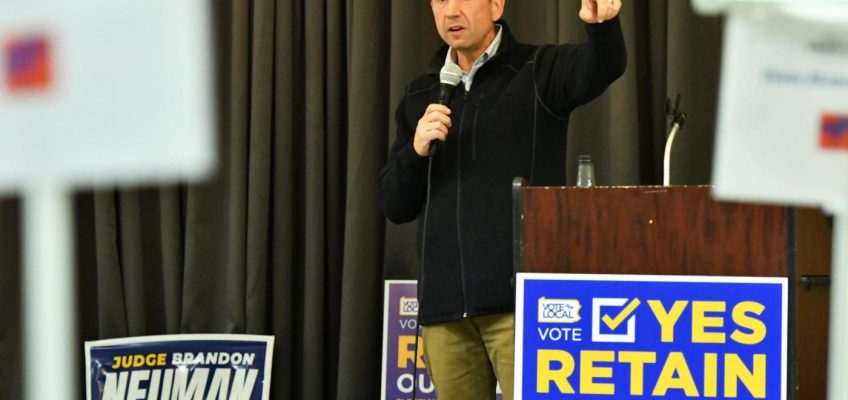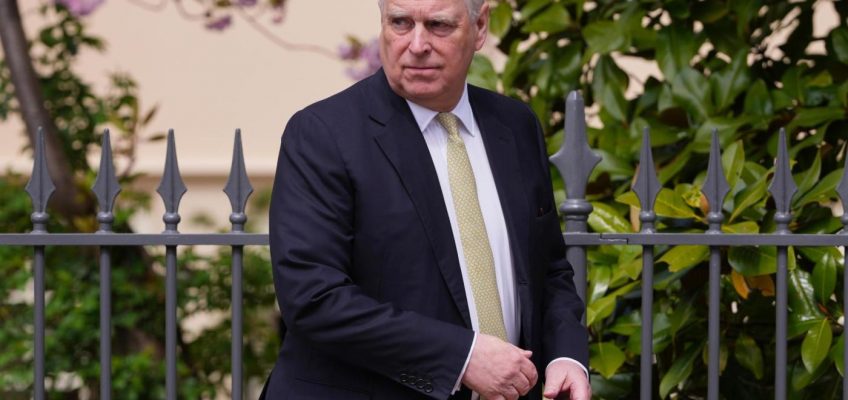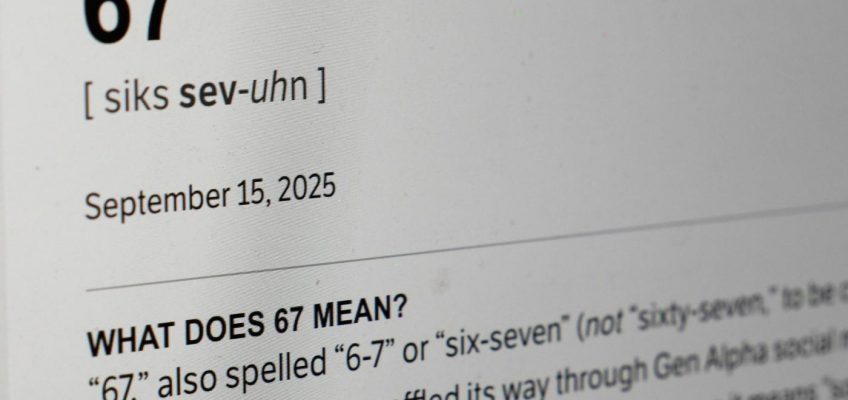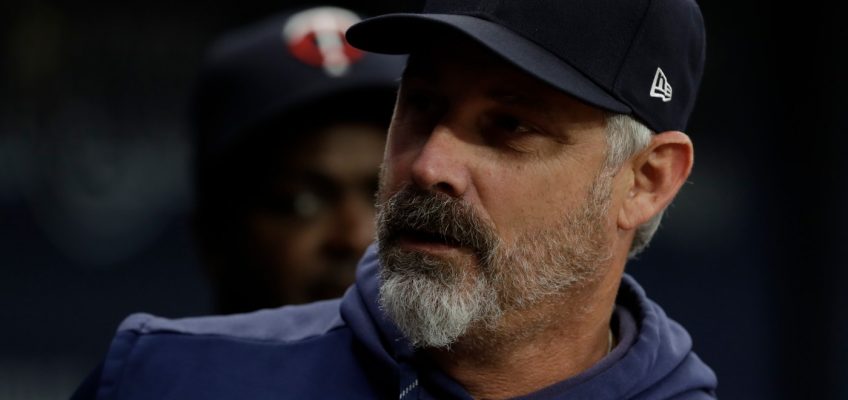By MARC LEVY, Associated Press
LANCASTER, Pa. (AP) — Democrats and their allied groups are pouring in more money, cutting a fresh television ad with Gov. Josh Shapiro and sending in the national party chairman in the final week of campaigning for a Pennsylvania Supreme Court election, possible signs of concern for a race that could reshape the highest court in the largest presidential battleground.
Spending in the race is on track to exceed $15 million — far surpassing previous spending in what’s called a retention election — as Democrats try to blunt a late-emerging Republican campaign to oust three Democratic justices.
The outcome will have consequences for next year’s midterm election, the 2028 presidential race and the next decade’s congressional redistricting. The nation’s most populous swing state has a politically divided government that has left disputes over election laws and other major issues to the courts in recent years.
At issue in Tuesday’s election is whether the three justices will each serve another term, up to 10 years. They don’t face opponents and are not listed by party affiliation. The ballot merely asks voters to cast a yes-or-no vote.
Retention elections are supposed to be nonpartisan, but Christine Donohue, one of the justices running to remain the bench, said she’s “shocked at the partisan nature” of the election.
“This is extraordinarily unusual,” Donohue said in an interview on Wednesday. “I suppose that’s a sign of the times, though.”
Christine Donohue, a Pennsylvania Supreme Court justice running for another term, acknowledges applause after speaking to the crowd at a Lancaster County Democratic Party event, Oct. 29, 2025, in Lancaster, Pa. (AP Photo/Marc Levy)
The Pennsylvania Supreme Court has a 5-2 Democratic majority, so an across-the-board loss for Democrats in Tuesday’s election could produce a 2-2 ideological split for two years. Political stalemate could likely prevent their seats from being filled until the next judicial election in 2027, potentially leaving the court unable to decide voting or election-related cases through next year’s midterm elections.
“It could lead to chaos,” Donohue said.
While the spending is far below the more than $100 million spent on a state Supreme Court election in Wisconsin earlier this year, it highlights how important these races have become for both parties because of the role state courts play in deciding redistricting disputes, lawsuits over voting and elections, and setting policy on hot-button issues such as abortion.
Donohue and the other justices up for retention, Kevin Dougherty and David Wecht, were spending their final days of the campaign attending Democratic Party rallies and get-out-the-vote efforts. Ken Martin, the Democratic National Committee chairman, traveled across Pennsylvania to headline events on Wednesday and Thursday.
A sign is posted in opposition to retaining Pennsylvania Supreme Court justices in the November election, in Berwyn, Pa., Wednesday, Oct. 22, 2025. (AP Photo/Matt Rourke)
At a Lancaster County Democratic Party meeting Wednesday evening, Martin told a couple hundred people that Republicans were trying to steal power by buying court seats so they can enact right-wing policy through the courts.
“This isn’t just about Pennsylvania,” Martin told the crowd. “Because if they win here, you can bet your bottom dollar they bring this in every single state around the country. … This is about our democracy.”
Democrats and their allies were on course to outspend Republicans by a ratio of as much as 4-to-1 after a blitz of TV ads in the final weeks to counter a wave of Republican flyers and commercials.
The TV ads supporting the justices portray them as defenders of abortion rights, union rights and voting rights. Backing them are labor unions, trial lawyers and Planned Parenthood’s political arm.
While not all spending or financial sources have been disclosed publicly, groups linked to a network that typically spends campaign contributions from Pennsylvania’s richest man, securities billionaire Jeffrey Yass, so far has spent about $2 million, according to figures from AdImpact, which tracks advertising.
A sign is posted in support of retaining Pennsylvania Supreme Court justices in the November election, in Berwyn, Pa., Wednesday, Oct. 22, 2025. (AP Photo/Matt Rourke)
Democrats and their allies reported spending more than $7 million in October. The ACLU and Planned Parenthood are among left-leaning groups that have increased their spending late in the race as Democrats seek to counter a wave of Republican-aligned TV ads and flyers that launched in September, just before voters began casting mail ballots.
The blitz concerned Democrats. Lancaster County Democratic Party Chairman Tom O’Brien said party members were in “panic mode” as they worried about how the party would respond.
Particularly worrisome to Democrats was Republican messaging urging Democratic voters to “term limit” the justices by voting no. It was packaged with wording meant to convey sentiments typically expressed by Democrats, including “no kings” and “defend democracy.”
Democrats also realized that a major task was educating voters about what a retention election is. O’Brien and others said they are feeling better as canvassers have helped educate voters, and Democratic-aligned flyers and TV ads have flooded the state.
Related Articles
4 Republicans back Senate resolution to undo Trump’s tariffs around the globe
Trump marshals an army of local cops for deportation dragnet
Democrats test a new playbook in Tuesday’s election: Less talk of Trump, more focus on economy
Justice Department strips Jan. 6 references from court paper and punishes prosecutors who filed it
Democratic senators demand answers on ICE’s use of full-body restraints on deportation flights
In an October TV ad running in Philadelphia and Pittsburgh, Shapiro told viewers that the justices “have proven that we can count on them to protect a woman’s access to abortion and birth control, and stand up for all our freedoms.”
Democrats say they are satisfied with their voting-by-mail turnout in the weeks leading up to the final day of voting, but they are continuing their campaign push. On Saturday, Philadelphia labor leaders and Mayor Cherelle Parker will lead a half-day motorcade through the city to promote the justices’ campaigns.
Republicans’ most potent voice, President Donald Trump, has not waded into the election, although his name has occasionally been invoked. A Republican-aligned TV ad says, “On Nov. 4, you can help President Trump to term limit three woke Pennsylvania Supreme Court justices.”
State Republican Party Chairman Greg Rothman suggested that a “no” campaign is only natural.
“Retention shouldn’t be automatic,” he said. “Otherwise, why even have it?”
Rothman said he didn’t know whether the Republican effort would succeed but said voters already cynical about government could be motivated to vote “no.” A state government budget stalemate approaching its fifth month and the federal government shutdown could put voters in a mood to vote against any incumbent.
“Based on the Democratic Party response, and Shapiro cutting ads and all the money that trial lawyers and the national DNC is bringing in, that they must think we’re onto something,” Rothman said.
Follow Marc Levy on X at https://x.com/timelywriter




